Keith Haring (Reading, 1958 - New York, 1990) is one of the best known artists of the 20th century thanks to his style that is instantly recognizable even to the uninitiated. Through his art, the U.S.-based Keith Haring, among the greatest street artists of all time, championed the most fashionable social and political issues of the time, such as defending civil rights and fighting discrimination against minorities, racism and homophobia. In addition, he moved as a spearhead for the campaign to raise awareness against crack cocaine use and spoke out several times in favor of introducing sex education in schools to prevent the spread of sexually transmitted diseases.
However, despite the fact that Haring attached great importance to the meanings of his works, he always preferred not to provide an explanation for them, moreover, leaving almost all of them unnamed. In fact, the artist argued that making a definition explicit limited the artworks solely to the author’s interpretation, thus relegating the audience to a purely passive role. Instead, Keith Haring wanted the viewer to play an active role in the development of the work, on par with the artist himself, because he believed that the audience should also participate in the creative process by developing their own interpretation of the work.
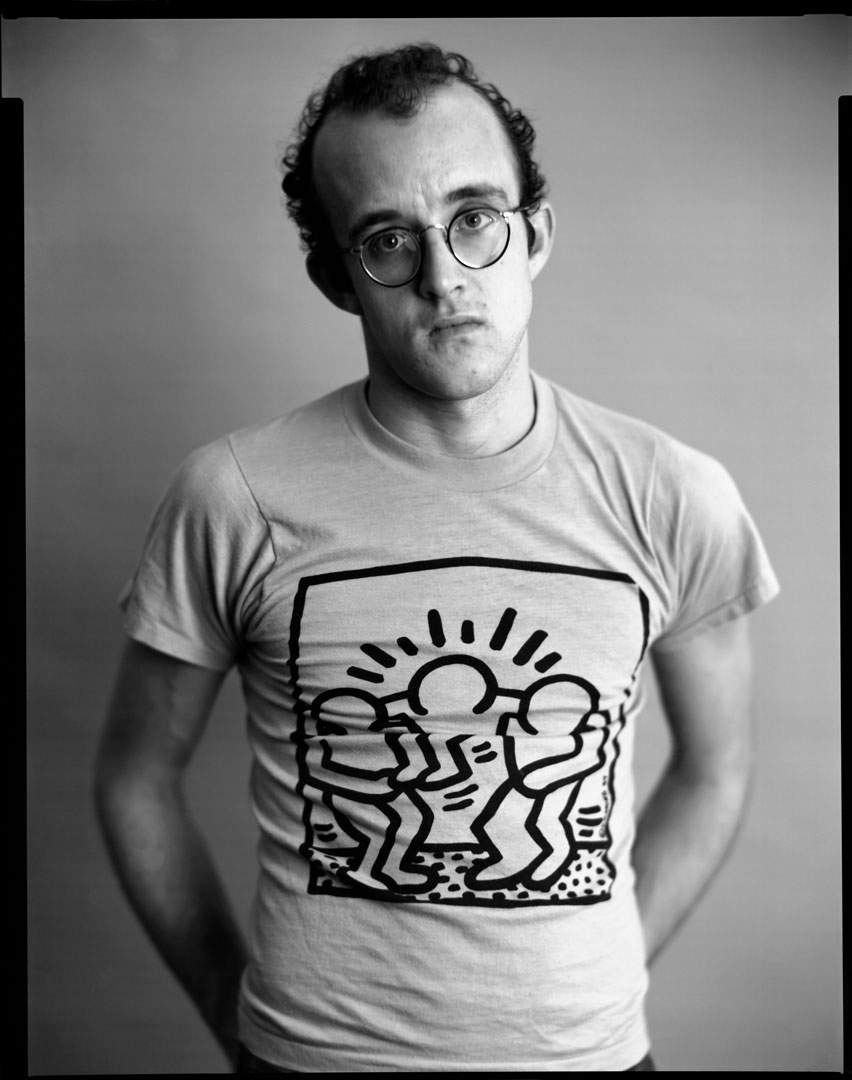
Keith Haring was born in Reading, Pennsylvania, out of the marriage of Joan Gruen and Allen Haring, an engineer who, in his spare time, liked to devote himself and his son to creating comics . In this way, young Keith first approached drawing by making depictions of animated characters. Haring’s childhood was marked by areligious upbringing, as he was a member of a Christian youth association. In the years to come, these close contacts with the spiritual sphere also had an important influence on his art.
In 1976 Keith Haring enrolled at thePittsburgh Art Institute, where he studied commercial art; however, the young man lost interest in the subject after a short time and found a job at the Pittsburgh Center for the Arts. During these years Haring became acquainted with the masterpieces of several contemporary artists who were to have great relevance for the development of his style: among the most important were Jean Dubuffet (Le Havre, 1901 - Paris, 1985), one of the exponents of the ArtBrut art movement, and Jackson Pollock (Cody, 1912 - Long Island, August 11, 1956), the leader ofabstract expressionism and inventor of the dripping technique. But the authors who most marked his art were Pierre Alechinsky (Schaerbeek, 1927) and Christo Javašev (Gabrovo, 1935 - New York, 2020). The former directed him toward making large-scale works in which he could combine writing with images, while the latter made him think about the importance of public involvement.
In 1978 Keith Haring moved to New York, where he began his studies at the School of Visual Arts. In the metropolis, the young artist came into contact with an artistic community that was active even outside of galleries and museums. What fascinated the young Haring most were the nightlife of the clubs and the many street artists in the city. Through frequenting these circles Keith met two young artists, Kenny Scharf (Los Angeles, 1958) and Jean-Michel Basquiat (New York, 1960 - New York, 1988). The latter also introduced him to Andy Warhol (Pittsburgh, 1928 - New York, 1987), then one of the most famous artists in all of America. Keith was deeply impressed by the thriving New York City environment and the then-emerging street art. Completely overwhelmed by the New York environment, Haring decided definitively toleave the School of Visual Arts and started an innovative artistic research closely related to graffiti art. It was during this period that some of the concepts underlying his style developed: the importance of movement in compositions and the need forart that could be enjoyed by as many people as possible.
Keith Haring was able to make a name for himself in New York City through the creation of numerous chalk graffiti on unused subway advertising boards. The aspiring writer considered these black boards his own notebooks, on which he could experiment with his ideas. Moreover, he saw them as a perfect medium between artist and viewer, since these works were seen daily by the many people who took the subway. On these panels were born the most famous figures of Keith Haring’s artistic imagination, such as the radiant child. This figure consisted of the image of a crawling child surrounded by dashes symbolizing vital energy.
The 1980s were the turning point in Keith Haring’s career, and he was recognized as one of the most important artists in the American scene and beyond. In 1981 his first solo exhibition was mounted in New York, at Westbeth Paintes Space. Only a year later the painter held a solo show at Tony Shafrazi ’s gallery in the famous Soho neighborhood. At this time Soho had become one of the driving centers of contemporary art, and the opportunity to exhibit his work in a gallery in this neighborhood guaranteed great visibility.
In the years that followed Keith took part in numerous international exhibitions, for example Documenta 7 in Kassel, and the Whitney Museum biennial. At the same time as creating numerous works of art, Haring engaged in a number of collaborations in the world of marketing. Among the most famous are the advertising campaign for Absolut Vodka and the development of a dial for the watch company Swatch.
As mentioned, Keith Haring did not limit himself solely to artistic pursuits for their own sake, but put his art at the service of numerous political and social struggles. For example, in 1985 Haring designed some images for the political campaign for the liberation of South Africa, and in 1986 he participated in the creation of a poster for the great march for global nuclear disarmament. Also in the same year, the artist headed to Berlin to execute a mural for the Checkpoint Charlie museum(read more about the artist’s work in Berlin here), and the Pop store was opened, a store selling a variety of products, for which Haring was responsible for the design.
While the 1980s was the turning point in Keith Haring’s artistic career, it was also the decade of the explosion of HIV, the carrier of the AIDS disease. This was first officially recognized in 1981 and at first was associated with its spread limited to the homosexual community and other minorities. Since Keith Haring lost numerous friends to the disease and also contracted it in 1988, he spearheaded an awareness program. The artist founded the Keith Haring foundation, a nonprofit organization committed to sex education campaigns, dissemination of prevention methods against STDs and on behalf of children. Finally, Haring spent the last years of his life making public works for charity and awareness campaigns (his last work, the mural Tuttomondo, is located in Italy, in Pisa to be precise), until he himself fell victim to the disease in 1990.
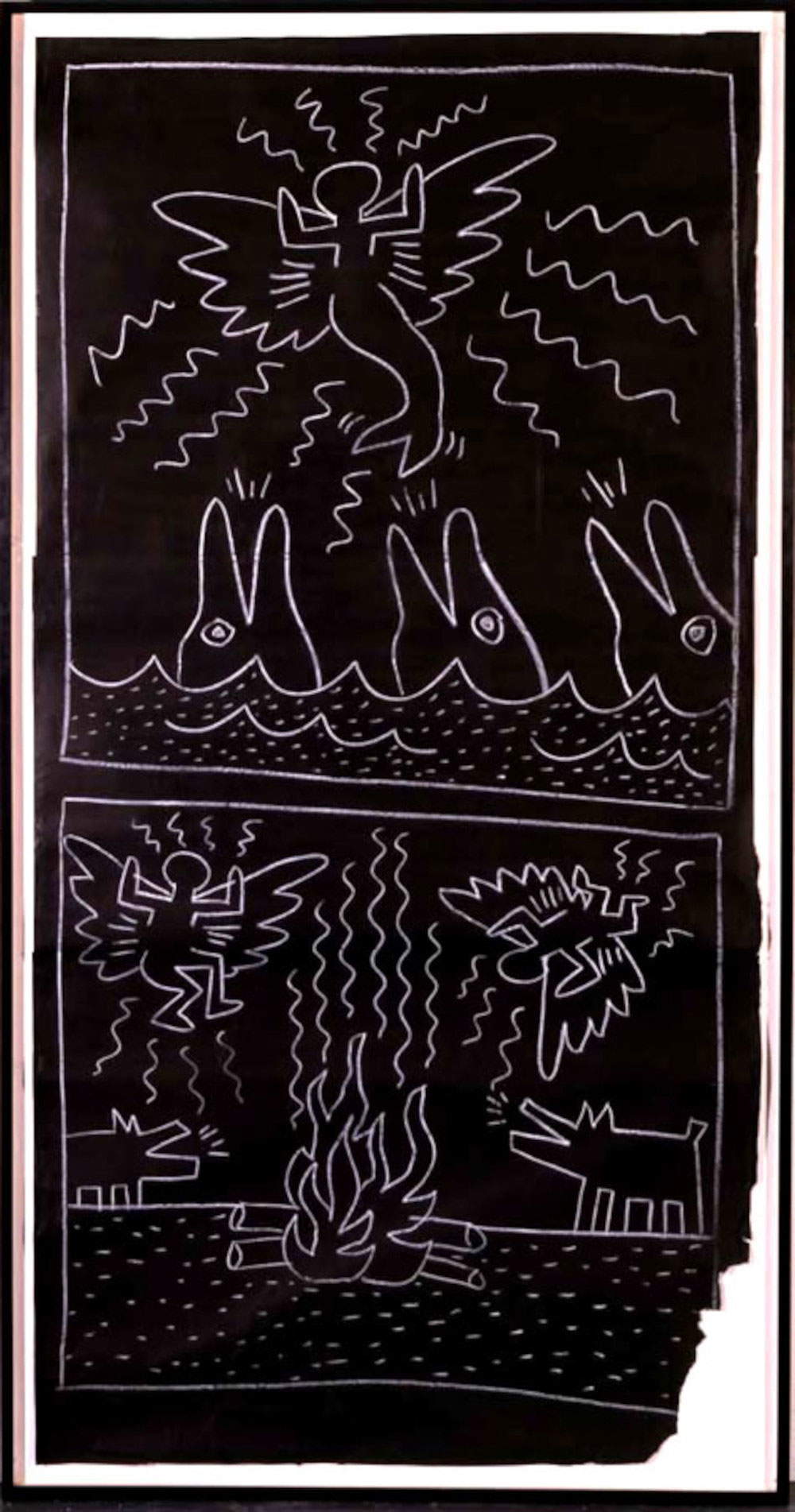
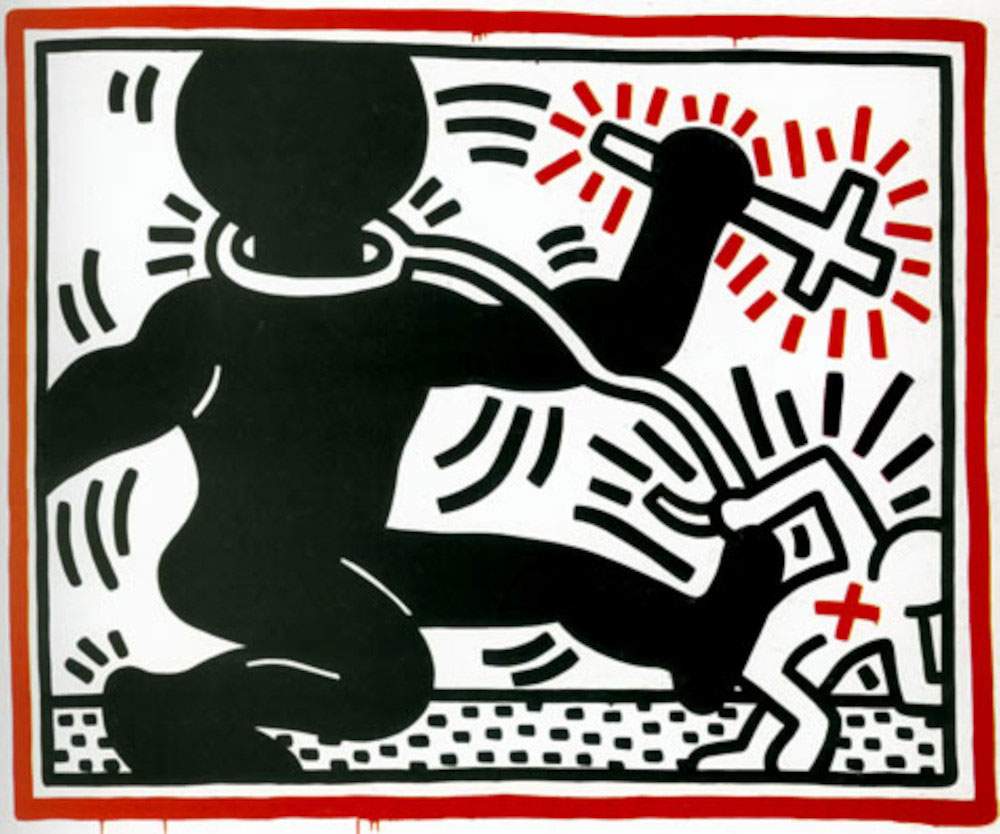

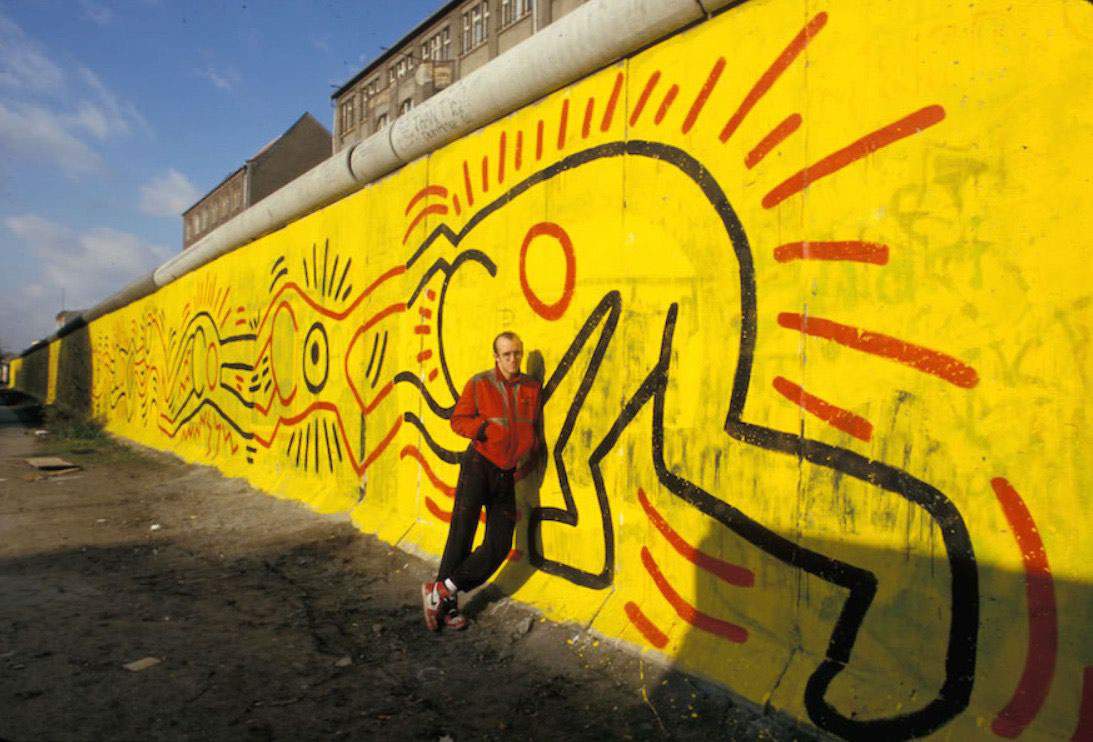
Keith Haring’s early works were influenced by the artistic currents in vogue at the time, particularlyAbstract Expressionism,Art Brut, and even Land art. His early works were characterized by small abstract shapes, interconnected through colors and black lines. Haring’s style began to mature once he moved to New York in 1978, thanks to his enrollment in the School of Visual Arts and his encounter with the city’s stimulating art community. At school, Keith met several professors who encouraged him to search for his own artistic language that would set him apart. Thus, Haring spent several months developing subjects that he displayed in the school hallways, asking his peers and professors which ones they preferred. At the same time, the young man got to know several people connected to the non-institutional art world through attending clubs. In particular, Keith was struck by the works of the writers who carpeted New York City, as they were able to reach more people. The result of this artistic pursuit were the chalk drawings, Untitled, on black billboards advertising the New York subway system.
In 1985 at the Museum of Contemporary Art in Bordeaux Keith Haring created the panels The Ten Commandments (1985), the result of the artist’s special relationship with religion. While Keith matured a general distrust of organized religion, he also showed great interest in Christian symbolism and mythology, from which he took inspiration for the creation of some of his most iconic figures.
In Bordeaux, his choice of theme was prompted by the exhibition environment, namely an old warehouse with a basilica plan and five side arches on either side. To represent the commandments, Haring decided to depict the sins themselves. In doing so, the artist was inspired by ancient medieval altarpieces, using few but symbolic colors. Haring used yellow for the background, in order to recall the gold leaf background of Russian icons, red to represent sin itself, blue for the sinners, and finally the other colors for the details. With the Ten Commandments, Keith sought to challenge people’s consciences, leading them to question how religion had changed over millennia. Although, at first glance the viewer might think of a pornographic depiction, in reality theerotic element was only functional in providing a distorted representation of religion.
The following year was probably one of the most prolific in Keith Haring’s short but intense career. In fact, in 1986 the artist created several works, including the famous mural Crack is wack (1986), placed in the Harlem neighborhood of New York City. The mural was created in response to the spread of crack cocaine, a highly harmful narcotic that had spread in America in the 1980s. The then president of the United States, Ronald Reagan, implemented a very strict policy toward drug dealers and addicts. Haring was personally touched by this, since one of his co-workers, Benny, began abusing crack. After Keith tried to help him, albeit unsuccessfully, he realized that the measures taken by Reagan were completely useless in helping drug addicts. Thus, given the inefficiency of the government and the sad personal affair, Haring decided to create the mural to raise awareness. The artist created the work in a single day, in a style reminiscent of Disney cartoons and the works of the pop art movement, with which he was often associated. However, the mural faced a circuitous route, as once finished, Haring was stopped by police on charges of defacing the wall, risking jail time and a hefty fine. Keith was able to avoid jail time and pay a smaller fine thanks to important support from the media, which saw the artist’s work as an important stance in the battle against crack.
That same year Haring opened the first Pop Shop, in the Soho district, where objects of all kinds were sold, featuring motifs he had designed himself. Keith was harshly criticized for this project, as many saw the store as a method of getting rich. Haring responded to the accusations by saying, “I could make more money simply by selling a few works and inflating the price. My store is an extension of what I was doing in the subway stations, breaking down the barriers between high and low art.” In fact, tracing the artist’s journey, it is possible to understand how the Pop Shop was the fulfillment of his vision of ademocratic art.
In 1989 Keith Haring created his last public work in Pisa, Tuttomondo (1989). The mural(read more about the work here) grew out of a chance meeting between the artist and a young Tuscan visiting New York. Haring was hosted in Pisa for a week and spent the first few days analyzing the urban context in order to create a work that would last and fit well into the city. The creation of the mural turned into a kind of happening, as Keith involved the townspeople, inviting some young people to paint with him and enlivening the evenings with music typical of New York clubs. Although Haring did not usually make the meaning of his works explicit, this mural was an exception, as he explained in an interview that the mural was meant to represent world peace and the communion between man and nature. Moreover, he declared that if the mural was to have a name, it would be Tuttomondo.
Keith Haring’s career was cut short prematurely at the age of 31, yet his was a life full of successes and marked by constant social and political engagement, aimed at giving a voice to even the weakest and most marginalized.
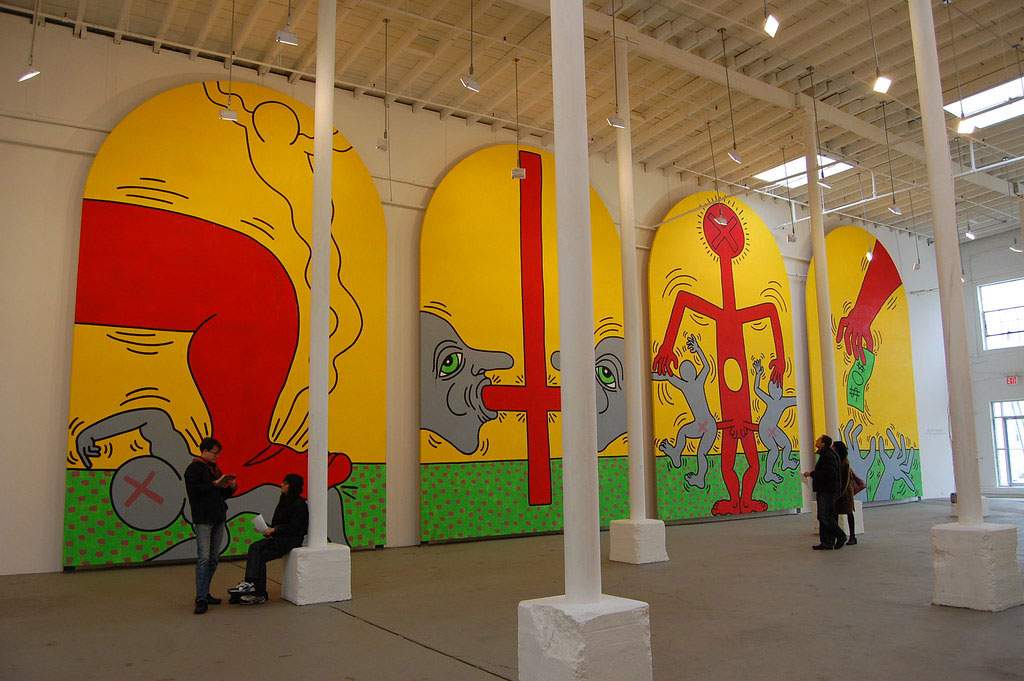
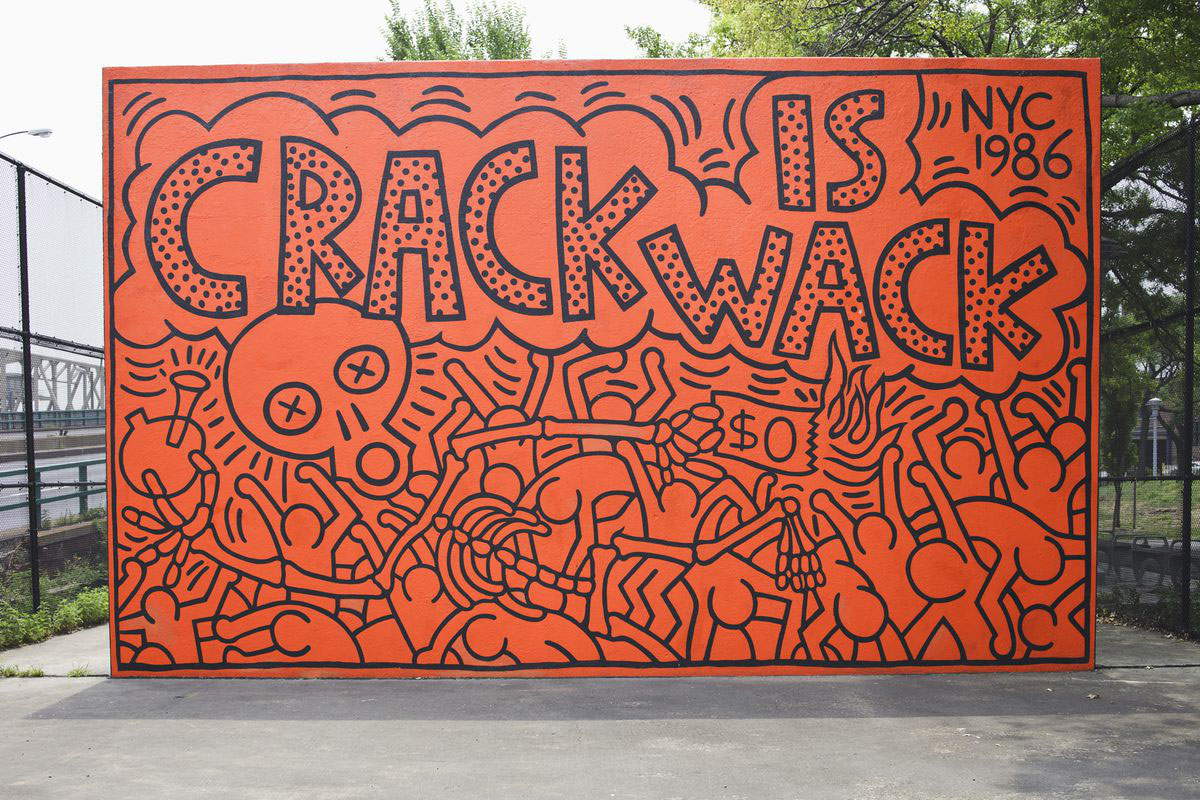
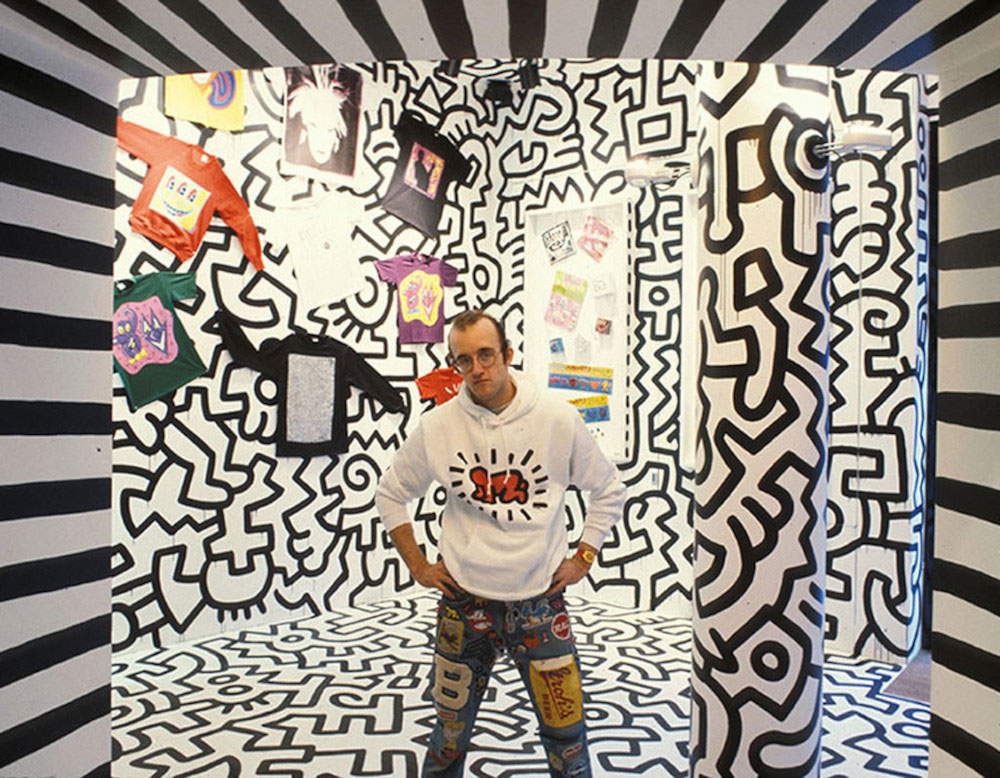
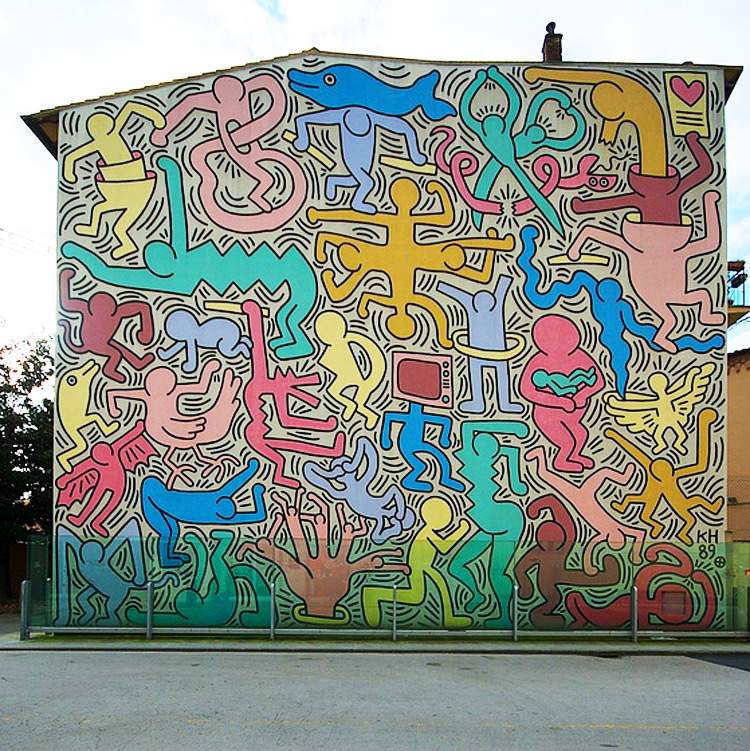
Keith Haring’s works are scattered all over the world, both inside galleries and on the walls of numerous cities. Most of Keith Haring’s works are kept in the United States: the Museum of Modern Art and the Whitney Museum of American Art, both in New York, house several of the artist’s works, as do the Los Angeles County Museum of Art and the Art Institute of Chicago. European museums also hold several works by Keith Haring, for example the Stedelijk Museum in Amsterdam, the Centre Georges Pompidou in Paris, and the Palazzo Grassi in Venice.
However, in Haring’s case it is not necessary to go to galleries to admire his masterpieces, because numerous murals are scattered all over the world: in New York there is the aforementioned mural Crack is wack, while in Philadelphia is located the mural We the Youth (1987). In contrast, in Italy the artist’s only public work is Tuttomondo in Pisa.
As for private foundations, the Keith Haring Foundation holds the largest number of works by the artist, while the Nakamura Keith Haring Collection is the second largest collection of masterpieces. Several works from the latter collection reached the Italian public at the Palazzo Blu Foundation in Pisa for a temporary exhibition from November 12, 2021 until April 17, 2022.
 |
| Keith Haring, life and works of the great American street artist |
Warning: the translation into English of the original Italian article was created using automatic tools. We undertake to review all articles, but we do not guarantee the total absence of inaccuracies in the translation due to the program. You can find the original by clicking on the ITA button. If you find any mistake,please contact us.